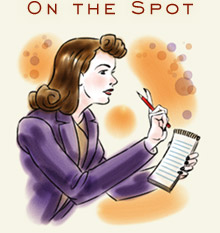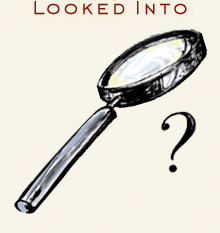Emdashes—Modern Times Between the Lines
The Basics:
About Emdashes | Email us
Ask the Librarians
Best of Emdashes: Hit Parade
A Web Comic: The Wavy Rule
Features & Columns:
Headline Shooter
On the Spot
Looked Into
Sempé Fi: Cover Art
The Wavy Rule, a Daily Comic by Pollux: Recession
Filed under: The Wavy Rule Tagged: cartoons, comics, economics, Pollux, The Wavy Rule

Click on the image for a detailed view! (continued)
Report: Remnick and Coates, at the New York Public Library
Filed under: On the Spot Tagged: Barack Obama, Barbara Ehrenreich, David Remnick, Dorothy Wickenden, Hillary Clinton? Cindy McCain? Teresa Heinz, Lorrie Moore, Nancy Pelosi, Nancy Reagan, Sandra Bullock, Ta-Nehisi Coates

Martin Schneider writes:
On Tuesday, April 6, I joined my Emdashes colleagues Emily Gordon and Jonathan Taylor at the New York Public Library for the publication day event for The Bridge, David Remnick's eagerly awaited book about Barack Hussein Obama, the 44th President of the United States. It was an hour of spirited discussion about Obama, moderated by Atlantic Monthly blogger Ta-Nehisi Coates, who has written two articles for The New Yorker and also appeared as a panelist at the 2008 New Yorker Festival.
In the summer of 2008, Remnick and New Yorker executive editor Dorothy Wickenden entered into a wager about the election's outcome—Remnick's full explanation of his pessimism was a slow repetition of Obama's full name. Today, as (continued)
I Guess We've Got That Speed-of-Light Thing Figured Out: Google Queries Around the World
Filed under: Looked Into Tagged: China, Google, Italy, Jonathan Taylor, Russia

Jonathan Taylor writes:
There's been a lot of fun lately looking at Google's search query completion suggestions (what's the better phrase for those?). With the hullaballoo about Google in China, I realized I hadn't yet seen comparisons of these searches across international Google sites. To wit: Here's what comes up on Google.com.hk (Hong Kong) when you type in "why" (in English):
Um, are you ready for the U.S. site's questions? (continued)
The Wavy Rule, a Daily Comic by Pollux: Legoland
Filed under: The Wavy Rule Tagged: cartoons, comics, Lego, Pollux, The Wavy Rule, toys

Click on the image for a detailed view! (continued)
The Wavy Rule, a Daily Comic by Pollux: Aeroplane Food
Filed under: The Wavy Rule Tagged: airplane, cartoons, comics, Pollux, The Wavy Rule

Click on the image for a detailed view! (continued)
The Wavy Rule, a Daily Comic by Pollux: The Gibraltar Barbary Apes
Filed under: The Wavy Rule Tagged: Afghanistan, cartoons, comics, Gibraltar, Pollux, The Wavy Rule

Click on the image for a detailed view! (continued)
Sempé Fi: Head Peace
Filed under: Sempé Fi Tagged: Alexander McQueen, Ana Juan, butterfly, covers, Elle, fashion, Johanna Cox, Pollux, style

Pollux writes:
“Homage” is the title of Ana Juan’s cover for the March 29, 2010 issue of The New Yorker. This issue is The Style Issue and the cover pays homage to a designer who recently passed away, Alexander McQueen.
Juan’s cover pays homage to not only McQueen, but to one of his Spring 2008 headpieces as well, a picture of which can be seen here. (continued)
The Wavy Rule, a Daily Comic by Pollux: Future Popes
Filed under: The Wavy Rule Tagged: cartoons, comics, Pollux, pope, Pope Benedict XVI, The Wavy Rule

Click on the image for a detailed view! (continued)
A New Formula: The "Christ, What an Asshole!" Caption
Filed under: Looked Into Tagged: caption contest, Cartoon Lounge, cartoonists, cartoons, Charles Lavoie, Ludwig Wittgenstein, Pollux

Pollux writes:
“Don’t take it as a matter of course,” the Austrian-British philosopher Ludwig Wittgenstein once wrote, “but as a remarkable fact, that pictures and fictitious narratives give us pleasure, occupy our minds.”
Christ, what an asshole!
I refer not to Wittgenstein, but to a universal caption that could be applied to all New Yorker cartoons in the magazine’s caption contest. Emily wrote on the phenomenon when it made its appearance in cyberspace.
As scientifically demonstrated by Charles Lavoie, “Christ, What an Asshole!” can be applied to multiple New Yorker cartoons without sacrificing their humor or coherence.
The caption seems to work, creating a fictitious and humorous narrative. Perhaps it’s the shock value of using profanity for classic New Yorker cartoons, or the fact that it exposes their basic formula: a bizarre figure or situation amidst a normal, workaday one.
“Christ, What an Asshole!” gives us pleasure and occupies our minds. (continued)
The Wavy Rule, a Daily Comic by Pollux: April Fools
Filed under: The Wavy Rule Tagged: April Fools' Day, cartoons, comics, Pollux, The Wavy Rule

Click on the image for a detailed view! (continued)








